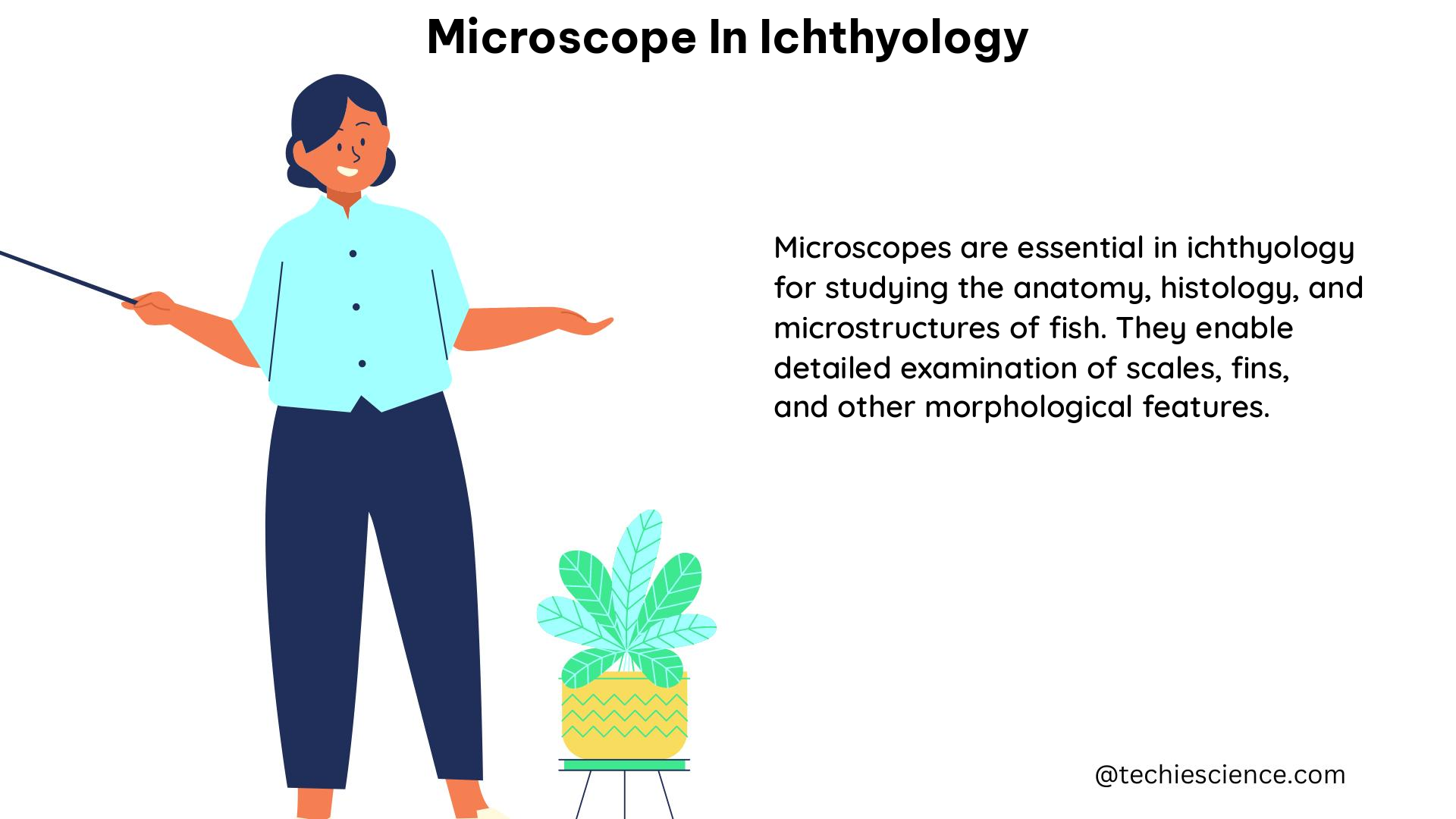The use of a microscope in the field of ichthyology, the study of fish, is crucial for the examination and analysis of various fish specimens and their components. Microscopy techniques allow researchers to measure and quantify physical, anatomical, and molecular traits of fish, enabling the identification and differentiation of different species.
Quantitative Analysis of Microscopy Data
One of the primary applications of the microscope in ichthyology is the ability to extract quantitative information from microscopy data. There are three main types of visual information that can be extracted:
- Intensity: The measurement of light or color in an image, which can be used to quantify aspects such as the thickness or density of a particular structure.
- Morphology: The measurement of shape and size, which can be used to quantify features like the length or width of a specimen or its components.
- Object Counts or Categorical Labels: The measurement of the number or type of objects present in an image, which can be used to quantify the presence or absence of specific structures or features.
To extract these quantitative data points, various algorithms and techniques can be employed, such as:
- Intensity Measurement: Histogram analysis, densitometry
- Morphology Measurement: Edge detection, shape analysis
- Object Counts or Categorical Labels: Particle analysis, machine learning algorithms
Contextual Considerations

When using a microscope in ichthyology, it is crucial to consider the specific biological question being investigated, as the relevance of a particular measurement may depend on the context. For instance, the measurement of intensity may be more relevant for studying the optical properties of a fish’s eyes, while the measurement of morphology may be more relevant for studying the skeletal structure of a fish’s fins.
Microscope Specifications and Sample Requirements
In addition to the technical specifications of the microscope itself, the specific requirements of the sample being examined must also be taken into account. The magnification and resolution of the microscope should be chosen based on the size and detail of the sample, while the type of light source and illumination technique used may be important depending on the transparency or opacity of the sample.
Principles of Optics and Light Microscopy
The use of a microscope in ichthyology involves the principles of optics and light microscopy. The microscope uses a combination of lenses and light to magnify and visualize the sample. The magnification power of the microscope is determined by the ratio of the focal length of the objective lens to the eyepiece lens, while the resolution is determined by the numerical aperture (NA) of the objective lens, which is a measure of the lens’ ability to gather light and resolve fine details.
Physics Formulas
- Magnification Power (M): M = (eyepiece focal length / objective focal length)
- Resolution (R): R = λ / (2 NA), where λ is the wavelength of light used
Physics Examples
The use of a microscope in ichthyology can be used to illustrate the principles of wave optics and the behavior of light. For example, the use of different wavelengths of light (such as visible light or ultraviolet light) can affect the contrast and resolution of the image, while the use of different types of illumination (such as brightfield or darkfield illumination) can also affect the visibility and contrast of the image.
Physics Numerical Problems
The use of a microscope in ichthyology can be used to calculate the magnification power and resolution of the microscope based on its technical specifications. For instance, if the objective lens has a focal length of 0.4 mm and the eyepiece lens has a focal length of 25 mm, the magnification power of the microscope would be M = (25 mm / 0.4 mm) = 62.5x. If the numerical aperture of the objective lens is 0.8, the resolution of the microscope would be R = 550 nm / (2 × 0.8) = 344 nm, assuming a wavelength of 550 nm (green light).
Conclusion
The microscope is an indispensable tool in the field of ichthyology, enabling researchers to extract quantitative data from fish specimens and their components. By understanding the principles of optics and light microscopy, as well as the specific considerations for using a microscope in ichthyology, researchers can effectively utilize this powerful tool to advance the study of fish and their characteristics.
Reference:
- Quantitative Analysis of Fish Morphology Using Microscopy and Image Processing Techniques
- Microscopic Examination of Fish Gills: A Valuable Tool in Ichthyology
- Fish Gill Section Microscope Slide

The lambdageeks.com Core SME Team is a group of experienced subject matter experts from diverse scientific and technical fields including Physics, Chemistry, Technology,Electronics & Electrical Engineering, Automotive, Mechanical Engineering. Our team collaborates to create high-quality, well-researched articles on a wide range of science and technology topics for the lambdageeks.com website.
All Our Senior SME are having more than 7 Years of experience in the respective fields . They are either Working Industry Professionals or assocaited With different Universities. Refer Our Authors Page to get to know About our Core SMEs.